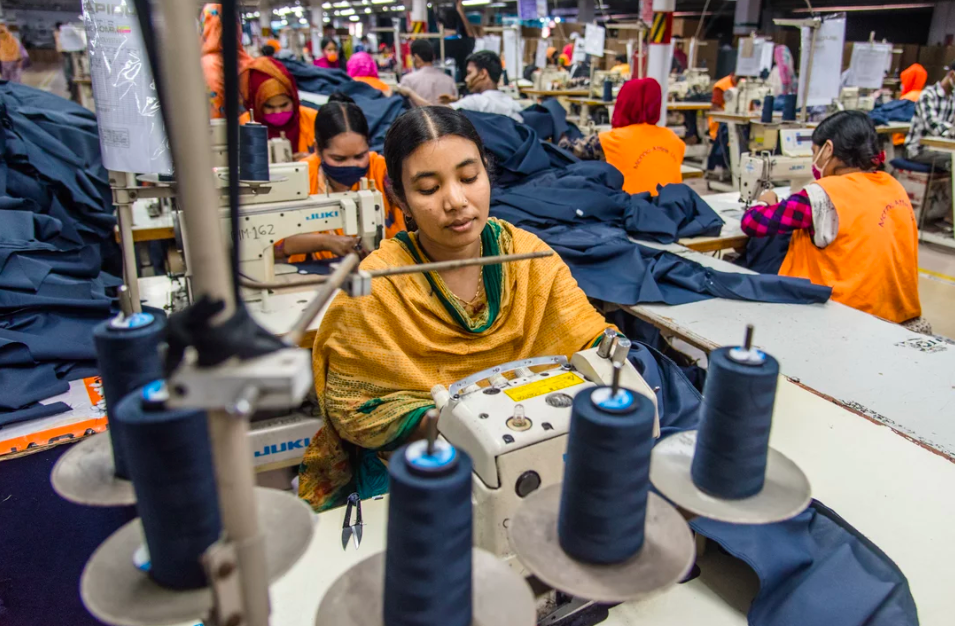Garment industry in crisis with half a million jobs lost in 2024
At least 76 factories have closed, affecting women most of all. The depreciation of the taka, financial pressure, and a drop in international demand have had a major impact. Manufacturers call for subsidies and a cut in interest rates. Fazlul Haque, the former president of an important business association, says the country’s needs political stability to develop.
Dhaka (AsiaNews) – More than half a million workers, mostly women, have lost their jobs last year in the garment industry, while at least 76 factories have closed their doors and more than a hundred are set to close.
These figures highlight the unprecedented crisis that has hit Bangladesh’s ready-made garments (RMG) sector, once the backbone of the export economy.
Industry players attribute this downturn to a combination of global and domestic challenges, which have forced factories to struggle to stay afloat.
Bangladesh is the second-largest garment making country in the world after China, from which developing countries are increasingly buying fabrics.
Experts fear that if the current situation persists, more factories could be forced to close, causing more unemployment.
Fazlul Haque, former president of the Bangladesh Garment Manufacturers and Exporters Association (BGMEA), stressed the gravity of the crisis.
"The garment industry is in distress,” he explained. “Aside from a handful of factories, most are struggling to turn a profit. The longer the machines operate, the greater the financial burdens become.”
The problems are rooted in both international and domestic issues. The depreciation of the Bangladeshi taka against the US dollar has pushed up the cost of importing raw materials, while high interest rates on bank loans and persistent power shortages have put a strain on production.
The gas supply crisis and rising tariffs have also exacerbated the financial pressure on manufacturers.
Internationally, demand from key markets has declined, with export orders falling by 3 per cent last year. Buyers in the European Union have reduced prices of garments from Bangladesh by 5 per cent while US buyers cut them 8 per cent.
These price cuts, coupled with reduced overall demand, have left factory owners struggling to cover costs.
Despite the crisis, Bangladesh's RMG sector still managed to reach exports of US$ 38.48 billion in 2024. Knitwear products accounted for US$ 20.52 billion of this total, while woven products contributed US$ 17.95 billion.
However, industry insiders warn that these figures hide the serious financial strain on manufacturers as many factories have had to absorb losses to maintain export volumes, a strategy that is unsustainable on the long-term.
The loss of more than half a million jobs has mainly affected women, who are the bulk of the sector's workforce. This sudden unemployment has financially hit many families, with repercussions on the economy in general.
To revive the sector, industry leaders and stakeholders are calling for comprehensive support measures, including government subsidies, reduced interest rates on bank loans, and investments in alternative energy sources. Without swift action, the RMG sector risks further decline.
Some 2,564 garment factories are overseen by the BGMEA, with more than 600 operating in the country’s eight Export Processing Zones (EPZs). Despite this large industrial base, 76 BGMEA-affiliated garment factories shut their doors in 2024.
BGMEA’s former President Fazlul Haque stressed the importance of political stability for industrial growth. “A stable government is vital for advancing the country’s industries,” he said. “We need new leadership to address the ongoing crisis in the industrial sector.”
According to the Bangladesh Bureau of Statistics (BBS), the overall number of unemployed increased slightly in the third quarter (July-September) last year, reaching 2.66 million. The quarterly labour force survey released on Sunday shows a 20,000-job loss over the previous quarter.
31/01/2019 20:23
06/06/2023 14:02







.png)










